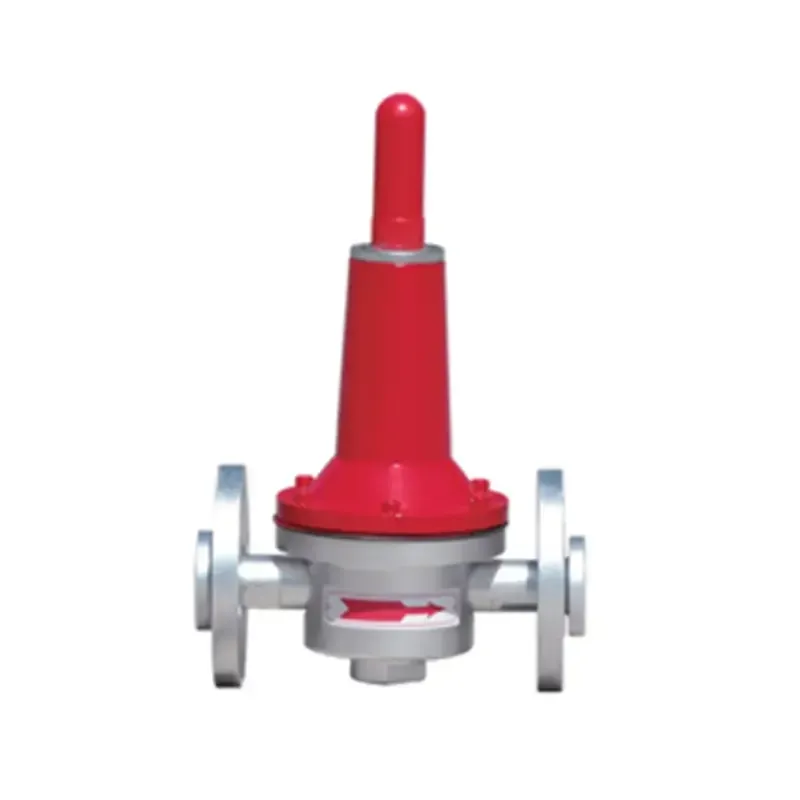
Nov . 25, 2024 22:47
Back to list
pressure reducer
Understanding Pressure Reducers Essential Components for Fluid Control Systems
In various engineering and plumbing applications, pressure control is crucial for maintaining the safety and efficiency of systems that rely on the transfer of fluids. A key component in achieving this is the pressure reducer. This article explores the function, types, benefits, and essential considerations related to pressure reducers, providing a comprehensive overview for anyone interested in fluid control systems.
What is a Pressure Reducer?
A pressure reducer, also known as a pressure relief valve or pressure regulator, is a device designed to lower and stabilize the pressure of a fluid flowing through a system. It takes high-pressure input and provides a controlled lower pressure output, ensuring that equipment downstream is not exposed to pressure levels that could cause damage or inefficiency.
How Does a Pressure Reducer Work?
At its core, a pressure reducer operates based on the principles of balance and feedback. When fluid enters the reducer, it is exposed to a spring mechanism that opens and closes valves within the device. As the pressure increases to an undesired level, the valve closes to restrict flow, thus reducing the output pressure. Conversely, if the output pressure drops below the desired threshold, the valve opens, allowing more fluid to pass through. This dynamic operation ensures a constant output pressure, making pressure reducers critical for many applications.
Types of Pressure Reducers
Pressure reducers come in a variety of designs, each suited to different systems and requirements
1. Single-Stage Regulators These are typically used for low-pressure applications where minimal pressure adjustment is needed. They are simpler in design and cost-effective, making them suitable for household systems.
2. Two-Stage Regulators Ideal for high-pressure gas systems, these regulators reduce pressure in two stages. This design allows for more stable pressure regulation and greater accuracy, minimizing fluctuations in output pressure.
3. Electric Pressure Regulators These modern devices utilize electronic sensors and control systems to adjust pressure automatically, improving precision and efficiency in industrial applications.
4. Spring-Loaded Regulators These are widely used in plumbing and HVAC systems. They rely on a mechanical spring to maintain the desired pressure, making them reliable and straightforward.
Benefits of Using Pressure Reducers
pressure reducer

Implementing pressure reducers in a fluid system offers several advantages
- Safety By maintaining appropriate pressure levels, these devices prevent over-pressurization that could lead to system failures or hazardous situations.
- System Longevity Regulating pressure reduces wear and tear on equipment and piping, ultimately extending the life of the system and lowering maintenance costs.
- Efficiency Pressure reducers help optimize the performance of pumps and other machinery, leading to lower energy consumption and improved overall efficiency.
- Fluid Integrity In the case of sensitive liquids or gases, maintaining stable pressure prevents the degradation of quality and ensures the integrity of the fluid being transported.
Considerations When Choosing a Pressure Reducer
When selecting a pressure reducer, several key factors must be considered
1. Pressure Requirements Determine the input and output pressure levels necessary for your specific application to ensure the chosen reducer can accommodate these needs.
2. Flow Rate Assess the required flow rate; inadequate flow can lead to pressure drop issues and system inefficiencies.
3. Material Compatibility Ensure that the materials of the pressure reducer are suitable for the type of fluid being handled to prevent corrosion and leakage.
4. Maintenance Needs Some regulators may require more frequent maintenance than others. Evaluating maintenance requirements can save time and resources in the long run.
Conclusion
In conclusion, pressure reducers play a vital role in fluid control systems across various industries. Their ability to maintain safe and efficient pressure levels not only enhances the performance of equipment but also ensures system reliability and longevity. Understanding the types, benefits, and selection considerations related to pressure reducers is essential for engineers and technicians working with fluid dynamics. As technologies evolve, the development of advanced pressure regulation solutions will continue, further increasing the efficiency and safety of fluid management systems.
Latest news
-
Safety Valve Spring-Loaded Design Overpressure ProtectionNewsJul.25,2025
-
Precision Voltage Regulator AC5 Accuracy Grade PerformanceNewsJul.25,2025
-
Natural Gas Pressure Regulating Skid Industrial Pipeline ApplicationsNewsJul.25,2025
-
Natural Gas Filter Stainless Steel Mesh Element DesignNewsJul.25,2025
-
Gas Pressure Regulator Valve Direct-Acting Spring-Loaded DesignNewsJul.25,2025
-
Decompression Equipment Multi-Stage Heat Exchange System DesignNewsJul.25,2025

